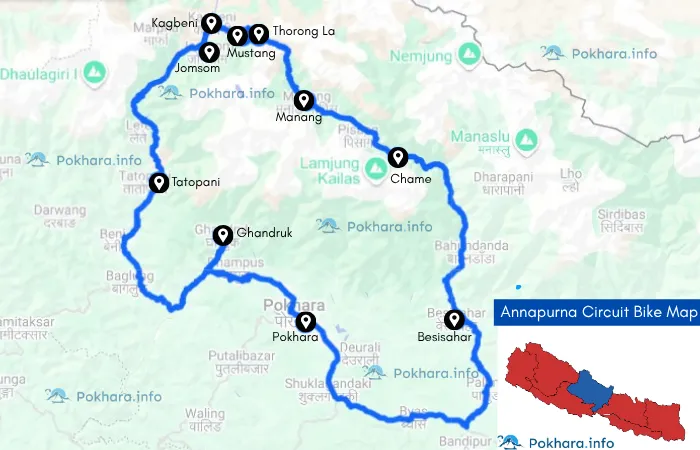
Embark on an exhilarating bike trek through winding mountain paths and breathtaking landscapes.
Annapurna Bike Adventure
Typical Riding Distance
350 to 450 km
Typical Duration
3 to 7 riding days
Highest Practical Riding Zones
Manang valley at 3,540 m
Road Surface
Mixed
Best Seasons
Sept to Nov and Mar to May
Permits
ACAP (Annapurna Conservation Area Permit) and TIMS
License & Paperwork
Valid motorcycle driving licence, International Driving Permit (IDP), Passport or Visa, Deposit
Overview
The Annapurna Circuit bike tour integrates diverse road surfaces. Paved highways connect with rough jeep tracks. High altitude switchbacks wind through the landscape. Gravel riverbeds add to the mix. Motorcyclists navigate an expanding network of roads. These paths now penetrate deep into the Annapurna Conservation Area. Some sections feature smooth paving. Others prove challenging and uneven.
Several route configurations are possible. The full loop represents the classic Circuit option. A one-way trip might conclude in Pokhara. It could end in Jomsom instead. Hybrid approaches work well too. Short hikes cover certain segments. Local jeeps then bypass the most difficult roads.
Road conditions show considerable variation. Smooth asphalt prevails from Pokhara to Beni. Graded surfaces appear beyond Beni toward Jomsom. These often include washboard textures that jar riders. Steep gravel switchbacks climb to Manang. Recent developments have enhanced blacktop access near Muktinath.
The Thorong La pass reaches 5,416 meters. Motor vehicles cannot traverse it directly. Practical limits for riding extend to lower Manang. Approaches near Thorong Phedi serve as alternatives. Riders must plan dismount points carefully. This setup allows combining motorcycle travel with a walking crossing of the pass.
Highlights of the Annapurna Circuit Bike Tour
Kali Gandaki: Ride the deep gorge with Annapurna and Dhaulagiri looming on either side of a road that feels cinematic at speed
Highland villages: Manang, Chame, Kagbeni and Marpha offer tea, apple pies and atmospheric stone lanes and perfect rest stops.
Muktinath by road: Reach the pilgrimage temple by vehicle on improved roads. It is convenient for riders who want spiritual stops without long walks
Off road thrills: Sections of jeep track make the route a genuine adventure ride. Sand, boulder fields and washboard demand skill and patience.
Itinerary
Day 1: Kathmandu to Besisahar to Dharapani or Chame
2,700 to 2,800 m at Chame areaStart early. Follow the Prithvi National highways toward Besisahar, then climb toward Dharapani or Chame. Road length and surface vary. Expect highway speed then narrower mountain roads.
Day 2: Chame to Manang
3540mA spectacular high valley day. Some gravel and tight switchbacks. Conserve fuel and brakes. Overnight in Manang at 3,540 m. It is a good place to acclimatize and service your bike if needed.
Day 3: Manang
3540mShort scenic rides, visit local monasteries, bakeries and check final gear before higher approaches. You can choose a short hike to Ice Lake or a local shrine.
Day 4: Manang to Thorong Phedi or Muktinath
3760mRide as high as local road permits. Many riders stop at Thorong Phedi or Lower Thorong area and then descend toward Muktinath or Jomsom depending on route. Note: Thorong La itself is crossed on foot (if desired)
Day 5: Muktinath to Jomsom to Kagbeni
2804mCruise the Kali Gandaki valley. Some newly paved stretches mixed with traditional jeep tracks. Visit Muktinath temple if you want a spiritual break.
Day 6: Jomsom to Tatopani to Ghorepani
2850mIf roads permit, descend and ride across dramatic landscapes. Otherwise, use jeeps in sections or take the established road lines toward the Pokhara side. Overnight near Ghorepani if you want the Poon Hill sunrise option. You need to park the bike and hike
Day 7: Ghorepani to Ghandruk to Pokhara
822mFinish the loop with lower altitude riding and a relaxing descent to lakeside Pokhara. Celebration beer is strongly recommended.
Cost Breakdown
| Item | Budget Price | Mid Range Price | Luxury Price |
|---|---|---|---|
| Bike Rental (Single Day) | $25 to $50 per day | $50 to $100 per day (Depends on bike type) | ------ |
| Fuel and Maintenance | $5 to $15 per day | $10 to $30 per day | ------ |
| Guide | $30 to $60 per day | $60 to $120 per day | ------ |
Note: TIMS and ACAP are priced in NPR and fluctuate slightly in USD; current references show TIMS NPR 2,000/1,000 (non-SAARC/SAARC) and ACAP NPR 3,000/1,000 (non-SAARC/SAARC).
Trip Map
Compliance
ACAP (Annapurna Conservation Area Permit)
Expected for travel inside the Annapurna Conservation Area. Many riders report checkpoint verifications at Besisahar and other entry points.
TIMS
Used historically for trekkers. Its status has seen changes though some agencies still reference it for documentation.
Driving licence & IDP
Rental companies generally require a valid motorcycle licence plus an International Driving Permit. They also copy passports and visas. Riding without a proper licence can invalidate insurance.
Local permissions / Upper Mustang
If your bike route intends to enter Upper Mustang, a Restricted Area Permit (RAP) is required, that’s separate and more expensive.
Monsoon caution
Heavy rains erase traction and expose landslides on unpaved sections. Avoid Beni to Jomsom stretch in monsoon unless you relish mud wrestling.
Bumpy is normal
Expect long washboard sections that punish forks, tyres and patience. Choose tyres and suspension accordingly.
Spare parts & mechanics
Manang and Jomsom have basic mechanics. Carry a puncture kit, spare clutch cable, chain links and basic tools.
Fuel planning
Fuel stations are regular in main towns. Carry a jerry can for longer off grid stretches.
Altitude and health
Riding reduces exposure time, but rapid altitude gains still affect riders. Hydrate, sleep well and watch for AMS symptoms when you stop and walk.
Packing
Riding gear: full face helmet (or dual sport), armored jacket, gloves, knee guards, good boots.
Bike kit: tubeless repair kit, spare tube (if tubed), multi-tool, chain lube, spare clutch or cable, zip ties.
Documents: passport & visa, driving licence & IDP, rental contract, insurance details, ACAP permit
Personal: warm layers , sun protection, basic first-aid and altitude meds
Connectivity, Money & Practicalities
Cash & ATMs: Carry sufficient NPR. ATMs exist in larger towns but not reliably in remote valleys
SIM & coverage: NTC or Ncell works in towns. Expect dropouts in higher & remote sections
Accommodations: Teahouses vary. Roadside guesthouses in biking hubs are common; book ahead in high season for groups
Frequently Asked Questions
Find answers to common questions about our trips
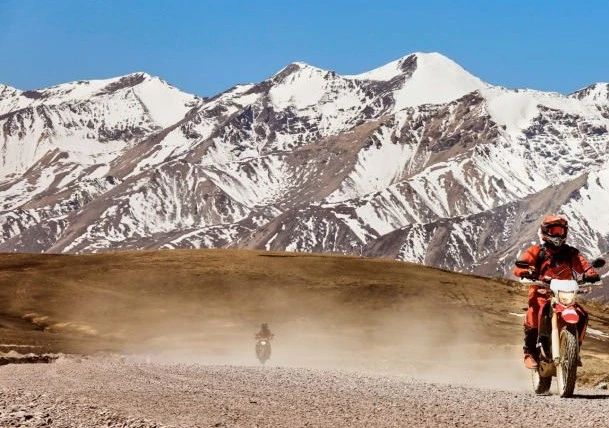
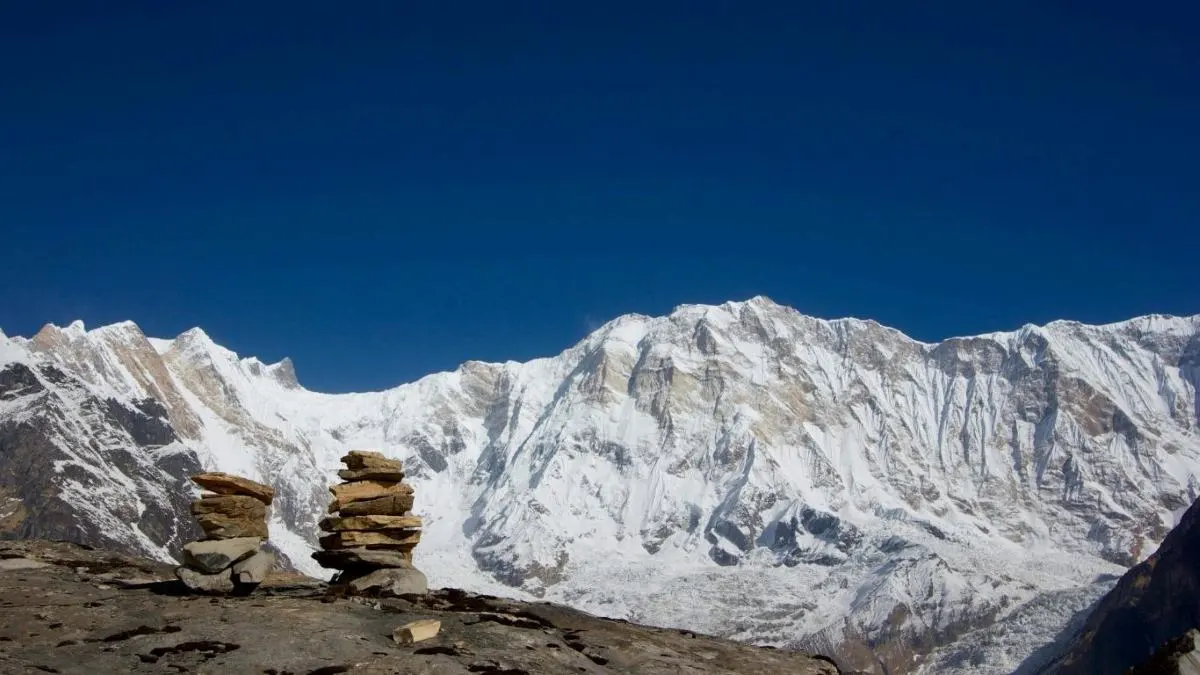
Related Trekking
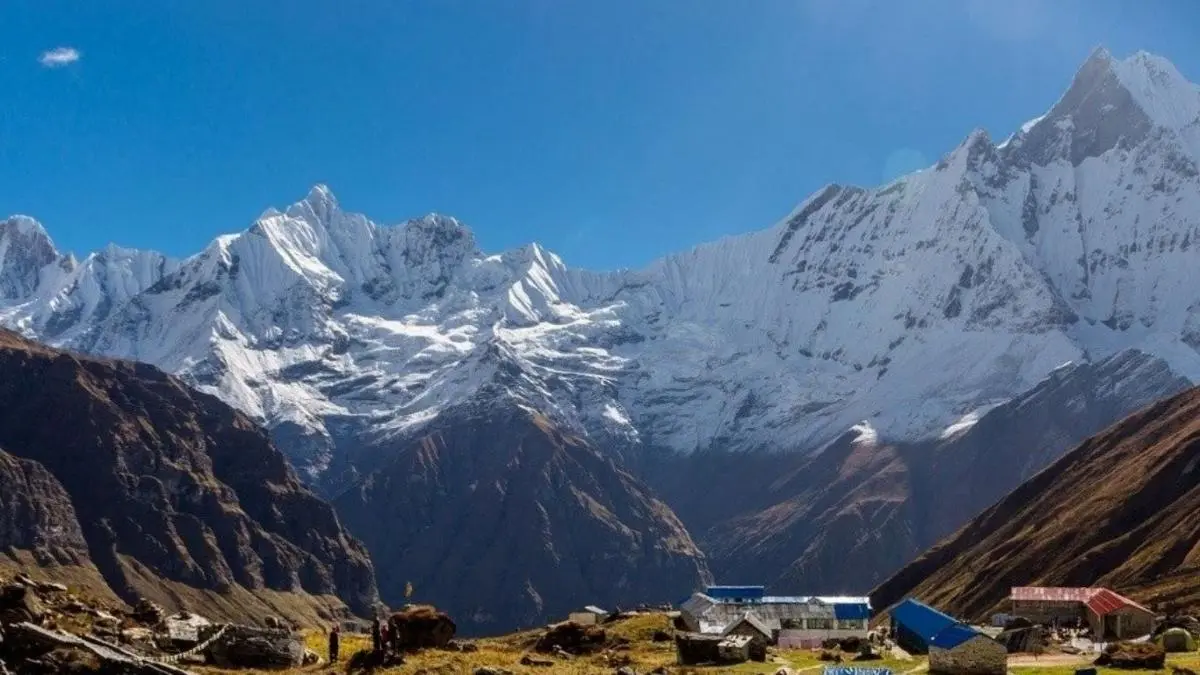
Annapurna Circuit Trek: Nepal’s Himalayan Wonderland
Complete the classic Annapurna Circuit, crossing Thorong La Pass and experiencing diverse cultures and landscapes.
Explore →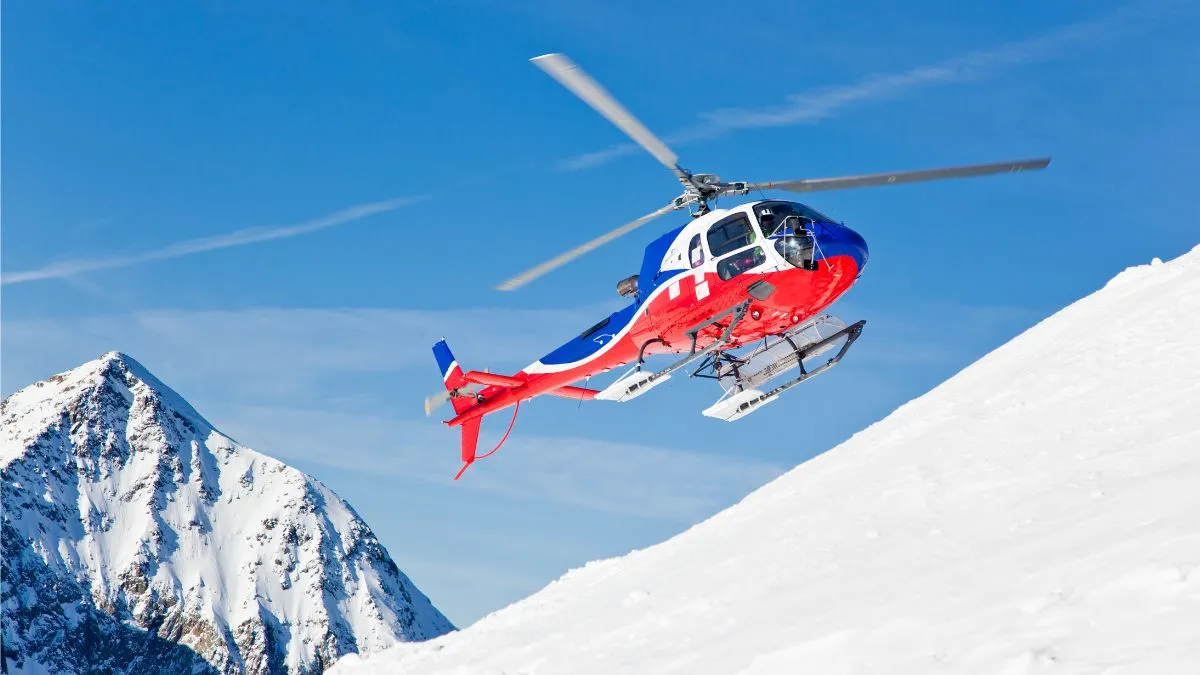
Annapurna Helicopter Journey
Experience breathtaking aerial views of the Annapurna range on this scenic helicopter tour over the majestic Himalayas.
Explore →
